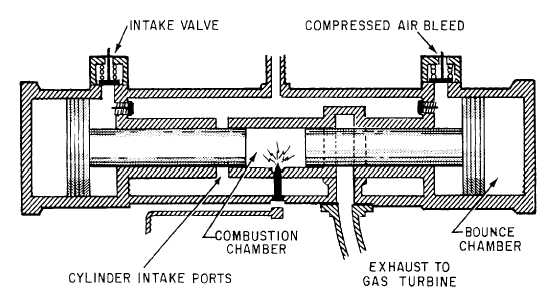TWENTIETH-CENTURY
DEVELOPMENT
The patent application for the gas turbine, as
we know it today, was submitted in 1930 by an
Englishman, Sir Frank Whittle. His patent was
for a jet aircraft engine. Using his ideas, along
with the contributions of such scientists as Coley
and Moss, Whittle developed a working gas
turbine engine (GTE).
AMERICAN DEVELOPMENT
The United States entered the gas turbine field
in late 1941 when General Electric was awarded
a contract to build an American version of a
foreign-designed aircraft (gas turbine) engine. The
engine and airframe were both built in 1 year. The
first jet aircraft was flown in this country in
October 1942.
In late 1941, Westinghouse Corporation was
awarded a contract to design and build from
scratch the first all-American gas turbine engine.
Their engineers designed the first axial-flow
compressor and annular combustion chamber.
Both of these ideas, with minor changes, are the
basis for the majority of gas turbine engines in
use today.
MARINE GAS TURBINES
The concept of using a gas turbine to
propel a ship goes back to 1937 when a Pescara
free-piston gas engine was used experimentally
with a gas turbine. The free-piston engine, or
“gasifier” (fig. 6-4), is a form of diesel engine
that uses air cushions instead of a crankshaft to
return the pistons. It was an effective producer
of pressurized gases, and the German Navy used
it in their submarines during World War II as
an air compressor. In 1953, the French placed in
service two small vessels powered by a free-piston
engine/gas turbine combination. In 1957, the
United States put into service the liberty ship
William Patterson, having six free-piston engines
driving two turbines.
The gasifier, or compressor, was usually an
aircraft jet engine or turboprop front end. In
1947, the Motor Gun Boat 2009, of the British
navy, used a 2500 horsepower (hp) gas turbine to
drive the center of three shafts. In 1951, in an
experimental application, the tanker Auris replaced
one of four diesel engines with a 1200 hp gas
turbine. In 1956, the John Sergeant had a
remarkably efficient installation that used a
regenerator to recover heat from the exhaust
gases.
By the late 1950s, gas turbine marine engines
were becoming widely used in combination with
conventional propulsion equipment mostly by
European navies. Gas turbines were used for high-
speed operation, and conventional plants were
used for cruising. The most common arrange-
ments were the combined diesel or gas turbine
(CODOG) or the combined diesel and gas turbine
(CODAG) systems. Diesel engines give good
Figure 6-4.—Free-piston engine.
6-2


